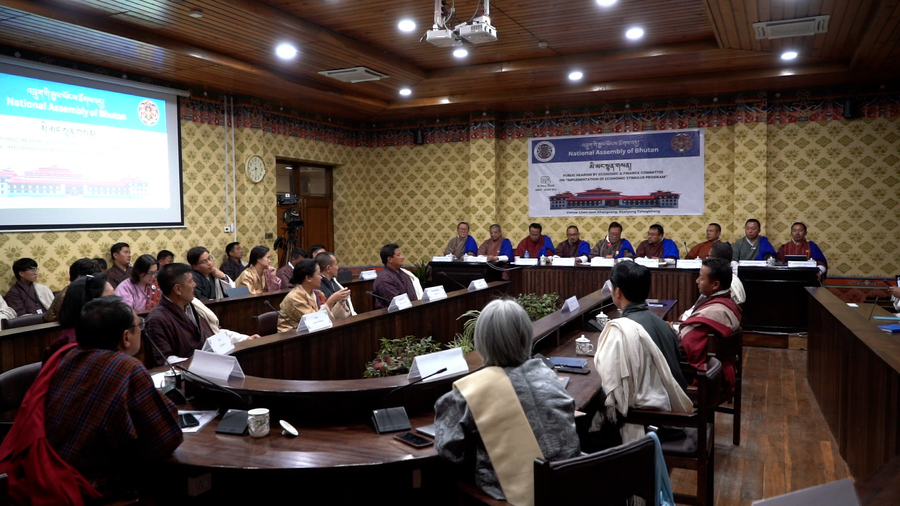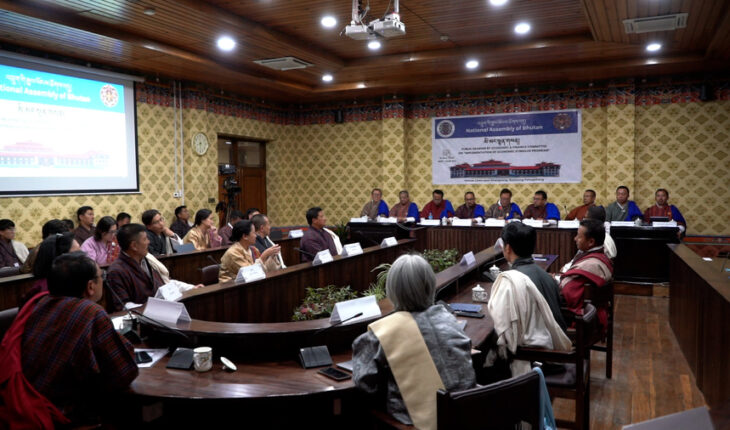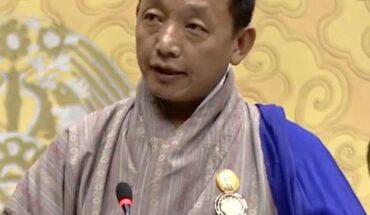
CHONEY ZANGMO
Thimphu
The Economic and Finance Committee of the National Assembly held a public hearing on May 16 to evaluate the progress and effectiveness of the Economic Stimulus Programme (ESP).
Launched in 2024, the ESP was envisioned as a critical intervention to rejuvenate the nation’s economy post-COVID-19. However, the hearing exposed several issues — from sectoral limitations and regional disparities to bureaucratic hurdles and public disillusionment.
The public hearing was held to update the public on the ESP and challenges faced on the ground and to assess the effectiveness of the ESP in reviving the economy.
Of the Nu 15 billion allocated under the ESP, only Nu 5.3 billion was earmarked for short-term financial support such as concessional loans to businesses.
The remaining Nu 9.7 billion was directed toward long-term economic initiatives. While designed to promote structural transformation, this allocation sparked debate among lawmakers.
Members of Parliament questioned the necessity of the long-term fund given the existing Nu 80 billion allocation for economic development in the 13th Five-Year Plan.
The Committee Chairperson MP Rinchen Wangdi from Bartsham-Shongphu constituency labeled the Nu 9.7 billion as a duplication of existing economic programs.
Responding to these concerns, Director Chencho from the Prime Minister’s Office clarified that the long-term funds were intended to support sectors deeply affected by the pandemic, including tourism and hospitality.
Initiatives like setting up a crafts bazaar for artisans and ecosystem development for loan recipients were highlighted as examples.
A recurring point of contention was the narrow sectoral focus of the ESP. Currently, the program prioritizes agriculture, production, and manufacturing. This has left out critical sectors such as trade, services, and tourism, despite their significant contribution to Bhutan’s GDP.
In defense, the Secretary of the Ministry of Finance explained that the three prioritized sectors were chosen for their potential in job creation and domestic production. Nevertheless, many MPs argued that excluding other key industries risks undermining the ESP’s broader economic impact.
Regional imbalances in loan disbursement were also raised during the hearing. Some MPs questioned why Dzongkhags like Samtse and Chukha were receiving larger allocations, while others appeared to be left behind.
In response, the CEO of BDBL clarified that allocations are not determined by geography or demographics but by the number and size of applications. Dzongkhags with larger-scale production units tend to request higher quantum loans, while more agriculture-based regions submit smaller-scale proposals.
Still, the explanation did little to allay concerns about equitable access. Many MPs urged the ESP team to revisit allocation metrics to ensure all regions — especially rural areas — receive fair support.
Another pressing issue highlighted was the general lack of public awareness about the ESP and the challenges posed by low financial literacy.
The Radhi-Sakteng MP noted that nearly 26,000 farmers were struggling to repay existing loans, and this may reflect a lack of understanding of financial obligations or available support.
The Royal Monetary Authority (RMA) Governor acknowledged the concern and said the RMA was committed to working with the government to expand outreach and education efforts.
The ESP Steering Committee also stated that 90% of gewogs had applied for loans, but emphasized the need for improved public communication and advisory services.
A deeper issue underlying the sluggish disbursement is the absence of risk-sharing mechanisms. Participating financial institutions currently bear 100% of the lending risk, leading to overly cautious lending practices.
This, observers said, has disproportionately affected startups and small businesses that lack collateral or formal credit histories.
The Economic and Finance Committee recommended introducing subordinate debt instruments or government-backed guarantees to distribute the financial risk and encourage more inclusive lending.
With the rise in loan defaults, MPs also questioned the impact of the ESP on Bhutan’s growing NPLs. The RMA Governor assured the Parliament that the central bank is in ongoing discussions with financial institutions.
He added banks have been directed to evaluate businesses on a case-by-case basis, particularly those genuinely affected by the pandemic.
There is concern, however, that without comprehensive restructuring or flexible repayment terms, the ESP could exacerbate financial instability rather than mitigate it.
The Economic and Finance Committee concluded the hearing by stating that a formal report will be presented during the third session of the Fourth Parliament. The report is expected to contain a set of refined recommendations and a roadmap for restructuring the ESP.
Key suggestions under consideration include the reassessing the allocation of split between short term and long-term components, expanding sectoral eligibility to include trade, tourism and services, and implementing risk sharing tools to facilitate greater lending.
Others include standardization procedures and improving transparency across financial institutions and launching nationwide financial literacy campaigns to boost responsible borrowing and effective use of funds.
The ESP was launched with the intention of revitalizing Bhutan’s economy and empowering its entrepreneurial class. However, the findings of the public hearing reveal that without meaningful reforms — both structural and operational — the program risks falling short of its transformative potential.
The Committee Chairperson Rinchen Wangdi acknowledged the value of the testimonies and affirmed to transparency and accountability.
He also emphasized that the hearing is a part of Parliament’s constitutional role to access public policies in light of ground realities and to ensure that such programs serve the intended purposes.





